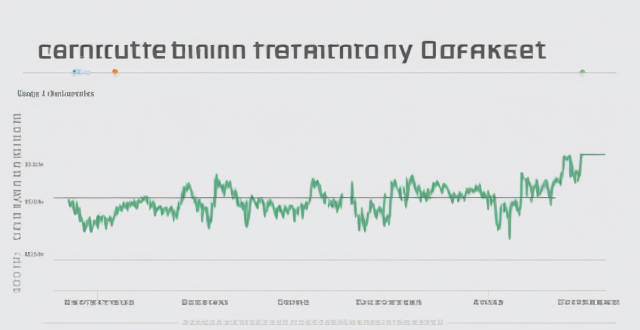Invest Discuss

What is the best way to invest in gold ?
This article explores the best way to invest in gold, discussing why one might want to consider adding gold to their portfolio and outlining different ways to invest in gold, such as physical gold, gold stocks and mutual funds, gold ETFs, and gold futures and options. The advantages and disadvantages of each method are discussed, and it is emphasized that the best way to invest in gold depends on individual investment goals, risk tolerance, and personal preferences.

How much money should I invest in cryptocurrencies ?
Investing in cryptocurrencies has become a popular trend, but determining how much money to invest can be challenging. Factors such as risk tolerance, investment goals, market conditions, and the need for diversification should be considered before making any investment decisions. It is important to carefully consider these factors and only invest what you are comfortable losing, as investing in cryptocurrencies carries risks.

How do I invest my money wisely for long-term growth ?
Investing wisely for long-term growth involves setting financial goals, creating a diversified portfolio, considering risk tolerance, investing for the long-term, and monitoring investments regularly.

How can individuals invest in clean energy projects ?
Investing in clean energy projects is a way to support sustainable development and fight climate change. Individuals can invest through renewable energy mutual funds, green bonds, direct investment in clean energy companies, community solar projects, and sustainable real estate investments. Examples include iShares Global Clean Energy ETF (ICLN), Toyota Green Bond, and Eco-friendly apartment complexes.

How can I invest in stocks with a minimal risk ?
How to Invest in Stocks with Minimal Risk Investing in stocks can be risky, but there are strategies to minimize these risks. Diversification across stocks, sectors, and asset classes is crucial. Dollar-cost averaging helps smooth market fluctuations. Stop-loss orders limit potential losses. Long-term investing allows for market recoveries. Understanding the companies you invest in reduces unknown risks. Start small and learn as you go, staying informed about financial news. Working with a financial advisor can provide personalized guidance. Remember, no investment is completely risk-free, so assess your comfort level before making decisions.

What is the best cryptocurrency to invest in ?
The article provides a summary of the best cryptocurrencies to invest in, including Bitcoin (BTC), Ethereum (ETH), Binance Coin (BNB), and Cardano (ADA). It highlights the pros and cons of each cryptocurrency, such as high liquidity and widespread adoption for Bitcoin, smart contract functionality and a large developer community for Ethereum, usefulness on the Binance exchange and a burn mechanism for Binance Coin, and a strong academic foundation and focus on security and sustainability for Cardano. The conclusion emphasizes the importance of considering factors such as liquidity, adoption, and potential for growth when choosing a cryptocurrency to invest in, and encourages readers to do their own research before making an investment decision.

How do I invest in the stock market ?
The text provides a step-by-step guide on how to invest in the stock market. It emphasizes the importance of education, determining investment goals, choosing a strategy, opening a brokerage account, selecting investments, monitoring them, and maintaining patience and discipline. The process involves learning about different types of stocks, understanding risks, diversification, and risk management. It also includes researching brokerage firms, funding an account, choosing individual stocks or mutual funds based on company performance, and staying informed about market changes. Overall, the text encourages potential investors to approach stock market investing with careful planning and research to achieve their financial goals over time.

Is it safe to invest in cryptocurrency as a financial product ?
Is it safe to invest in cryptocurrency as a financial product? The answer is not straightforward, as there are both risks and potential benefits associated with this type of investment. On the one hand, cryptocurrencies are known for their high volatility, lack of regulation, and security risks, which can make them a risky investment. On the other hand, investing in cryptocurrency can potentially yield high returns, offer decentralization, and be accessible to investors. Ultimately, it is important to carefully consider the risks involved before making any investment decisions and to only invest what you are willing to lose. As with any investment, it is recommended to do your own research and consult with a financial advisor before making any decisions regarding cryptocurrency investments.

Can I invest in financial products with a small amount of money ?
Investing in financial products with a small amount of money is possible and can be beneficial for long-term wealth growth. Minimum investment requirements vary among different financial products, but options like robo-advisors, micro-investing apps, online brokerages, ETFs, and direct stock purchases allow for low minimum investments. Starting small helps manage risk, build discipline, and take advantage of compound interest. Tips for investing small include setting clear goals, educating oneself, diversifying the portfolio, considering fees and taxes, and staying patient and disciplined.

Is it better to save or invest money for wealth growth purposes ?
The age-old debate of whether to save or invest money for wealth growth purposes largely depends on individual circumstances, risk tolerance, and financial goals. Saving offers security and stability but low returns, while investing carries more risk but has the potential for higher rewards. The best approach for most individuals is a balance between saving and investing, with strategies such as establishing an emergency fund, allocating for short-term goals, investing for long-term goals, and regularly re-evaluating financial plans.

How do I invest in tech stocks as a beginner ?
Investing in tech stocks can be a profitable venture, but it's important to approach it with caution and knowledge. Here are some steps to help you get started: 1. Educate yourself on the basics of the stock market and the technology sector. 2. Set investment goals based on your risk tolerance and desired returns. 3. Choose a reputable brokerage firm that offers access to the stock market. 4. Research individual tech stocks by looking at financial statements, earnings reports, and news articles. 5. Diversify your portfolio by investing in multiple tech stocks across different industries and companies. 6. Monitor your investments and stay informed about industry developments and company news. 7. Remember that investing in stocks involves risks, including the possibility of losing money. Do your own research and consult with a financial advisor before making any investment decisions.

How do I invest in wind energy projects ?
Investing in wind energy projects can be a lucrative opportunity, but requires careful consideration and planning. To ensure success, it is crucial to understand the industry, research potential projects, evaluate their feasibility and financial viability, conduct due diligence, choose a suitable investment strategy, secure financing, form partnerships, negotiate terms, monitor progress, and diversify your portfolio. By following these steps, you can make informed investment decisions and contribute to a sustainable future for generations to come.

How does the lack of women's education impact economic development ?
This essay discusses the impact of lack of women's education on economic development. It emphasizes that educated women are more likely to participate in the workforce, earn higher wages, and invest in their families and communities. Educated women are also more likely to start businesses and contribute to innovation and entrepreneurship. The lack of women's education leads to lower labor force participation, uneducated women earn lower wages and have limited career growth opportunities, limited access to credit and financial services makes it difficult for women to start businesses or invest in their communities, and reduced innovation and entrepreneurship hinders economic development. Therefore, investing in women's education is essential for promoting economic growth and development.

How does private equity impact job creation and retention ?
Private equity (PE) has a significant impact on job creation and retention, primarily through investing in underperforming companies, supporting startups and small businesses, and engaging in strategic acquisitions and mergers. PE firms also contribute to job retention by providing stable funding, investing in employee training programs, and participating in succession planning. While some argue that PE prioritizes short-term profits over long-term job growth, others contend that PE plays a crucial role in promoting economic stability and workforce development.

Is it safe to invest in cryptocurrencies ?
The text discusses the risks and benefits of investing in cryptocurrencies, including volatility, lack of regulation, security risks, high returns, decentralization, and anonymity. Tips for safe investment include doing research, diversifying investments, using reputable exchanges and wallets, and being wary of scams.

What factors should I consider before investing in gold ?
When considering investing in gold, it's importantWhen considering investing in gold, it's important define your investment goals, explore These factors will help you make an informed decision about whether gold is a suitable addition to your portfolio.

How do I invest in real estate without buying property ?
Real estate investment offers wealth growth opportunities without buying physical property through options like REITs, crowdfunding, syndication, online platforms, and mutual funds/ETFs. These methods provide liquidity, diversification, and passive income potential while avoiding typical challenges of direct property ownership.

In what ways do product reviews differ across various industries ?
Product reviews play a crucial role in shaping consumer behavior, and their impact can vary significantly across different industries. Here's a detailed exploration of how product reviews differ across various sectors: 1. Electronics and Gadgets: Reviews often delve into the technical aspects, comparing features with other products in the market. Users frequently comment on processing speed, battery life, and overall functionality. There's a keen focus on whether the product offers good value in relation to its price point. 2. Fashion and Apparel: Reviews emphasize how clothing items fit, discussing sizing accuracy and any adjustments needed. The feel and durability of fabrics are common topics of discussion. Aesthetic appeal is paramount, with comments on design, color, and overall look. 3. Food and Beverages: Reviews center around taste, often describing flavors and textures. For packaged goods, comments may touch on the quality of packaging and product freshness upon arrival. Health-conscious consumers discuss calorie content, ingredients, and nutritional benefits. 4. Automobiles: Reviews cover engine power, fuel efficiency, and handling. Interior comfort, infotainment systems, and safety features are evaluated. Long-term reliability and maintenance issues are key concerns. 5. Health and Beauty: Results achieved from using beauty or health products are a primary focus. Reviews may mention skin reactions or other adverse effects. Ease of use and product consistency (e.g., lotion thickness) are discussed. 6. Sports and Outdoor Equipment: How equipment holds up under various conditions is a central topic. Whether gear improves athletic performance is often debated. Especially for wearable items, comfort and proper sizing are crucial. 7. Home and Garden: For furniture or appliances, the assembly process is often reviewed. How well a product performs its intended function is evaluated. Aesthetic suitability for home environments is considered. 8. Software and Digital Products: User interface design and ease of navigation are key points. The range of features and tools offered by software is analyzed. Reviews might discuss compatibility with different devices or operating systems. 9. Baby and Childcare: Safety features and certifications are of utmost importance. Parents appreciate products that are straightforward to use while managing children. Withstands wear and tear from child usage is a significant factor. 10. Pet Supplies: Some reviews will discuss if the pet enjoys using the product. For consumables, ingredient quality is scrutinized. Toys and equipment must withstand rough play and potential chewing.

What are some examples of sustainable investments ?
Sustainable investments are becoming increasingly popular as investors seek to generate financial returns while also contributing to environmental and social causes. Examples of sustainable investments include green bonds, sustaple stocks, impact investing, and sustainable real estate. These investments offer benefits such as reducing carbon emissions, promoting renewable energy sources, supporting fair labor practices, and potentially earning competitive returns over time. By choosing to invest sustainably, investors can play an active role in protecting the environment, creating a more equitable society, and achieving financial success.

Is it a good time to invest in gold ?
Investing in gold is a popular choice for many investors, but whether it is a good time to invest depends on various factors such as market conditions, economic indicators, and personal financial goals. Market conditions are influenced by supply and demand, geopolitical events, and monetary policies. Economic indicators like inflation rates, interest rates, and economic growth can also impact the appeal of gold as an investment. Personal financial goals should also be considered, including diversification, long-term investment, and risk tolerance. It is important to assess individual circumstances and risk tolerance before making any investment decisions, and consulting with a financial advisor can provide valuable guidance tailored to specific needs and objectives.

How can I invest in the carbon trading market ?
The carbon trading market offers a lucrative investment opportunity for those interested in environmental sustainability and financial gain. To invest successfully, one should understand the basics of carbon trading, research different carbon markets, choose a broker or exchange, determine an investment strategy, and start trading while managing risk.

How do I start investing in gold ?
Investing in gold can be a great way to diversify your portfolio and hedge against inflation. Here are some steps to help you get started: 1. Determine Your Investment Goals 2. Research Different Ways to Invest in Gold 3. Choose a Reputable Broker or Dealer 4. Consider the Cost of Investing in Gold 5. Keep an Eye on Market Conditions 6. Diversify Your Portfolio

Are there any ethical considerations when celebrities invest in certain types of businesses ?
Celebrities must consider ethical implications when investing in businesses, including impact on consumers, environmental concerns, social responsibility, and transparency. Prioritizing ethical investments can promote positive change and set a good example for fans and the public.

How can we reduce our exposure to ionizing radiation from medical procedures such as X-rays and CT scans ?
This article discusses strategies to reduce exposure to ionizing radiation during medical procedures. It covers preparation before the procedure, such as informing your doctor about prior radiation exposure and discussing alternative imaging options. During the procedure, it suggests using lead shielding appropriately, optimizing machine settings, and limiting the number of exposures. After the procedure, it recommends following up with your doctor and monitoring for any side effects related to radiation exposure. Additionally, it provides lifestyle choices to minimize overall radiation exposure, such as staying informed about environmental radiation sources and limiting consumer products that could contain radioactive materials.

How much should I invest in each type of asset class ?
The text provides a guide on how to determine the allocation of funds across different asset classes based on investment goals, risk tolerance, time horizon, and financial situation. It suggests that younger investors should allocate more towards stocks while older investors should gradually shift towards safer investments. The text also emphasizes the importance of regularly reviewing and rebalancing the portfolio and seeking professional advice when unsure about investment decisions.

How do I invest in second-hand luxury goods ?
Investing in second-hand luxury goods requires careful consideration and research. Here are some steps to help you get started: 1. Determine your investment goals. 2. Research the market. 3. Choose the right platform. 4. Inspect the items carefully. 5. Negotiate the price. 6. Maintain the items properly.

Can you discuss the benefits and drawbacks of autonomous vehicles ?
The text discusses the advantages and disadvantages of autonomous vehicles. Among the benefits are increased safety, improved efficiency, accessibility, and environmental impact. However, there are also drawbacks such as job losses, liability issues, security concerns, cost, and public perception. It is important for policymakers and industry leaders to address these challenges to ensure that autonomous vehicles are safe, reliable, and accessible for all users.

How do I start investing in cryptocurrencies ?
The article provides a step-by-step guide on how to start investing in cryptocurrencies. It emphasizes the importance of educating oneself about cryptocurrency basics, market trends, and risk management before investing. The article also suggests choosing a reliable trading platform, creating an account, funding it, and starting small while diversifying the portfolio. It warns readers about the risks involved and advises consulting with a financial advisor if necessary.

What is the difference between angel investors and venture capitalists ?
The main differences between angel investors and venture capitalists are: - Investment Amount: Angel investors typically invest smaller amounts of money, while venture capitalists invest larger sums. - Investment Stage: Angel investors tend to invest in early-stage companies, while venture capitalists invest in later-stage companies that are further along in their development. - Risk Tolerance: Angel investors are generally willing to take on higher levels of risk than venture capitalists. - Involvement Level: Angel investors tend to be more hands-on and involved in the companies they invest in, while venture capitalists typically have less direct involvement.

What is the relationship between private equity and venture capital ?
Private equity and venture capital are investment strategies with similarities but distinct differences in focus, stage of investment, and type of companies they invest in. Private equity firms typically invest in established companies looking to expand or restructure, often in industries such as healthcare, technology, and real estate. Venture capitalists primarily invest in startups and early-stage companies with high growth potential, often in innovative technologies and new business models. Private equity investments are usually made in later stages of a company's development, while venture capital investments are made at earlier stages. Private equity firms tend to invest in larger, more mature companies with established revenue streams and proven business models, while venture capitalists invest in smaller, younger companies with high growth potential but also higher risks due to their unproven business models. It is important for investors to understand these differences when considering which type of investment strategy aligns with their goals and risk tolerance.